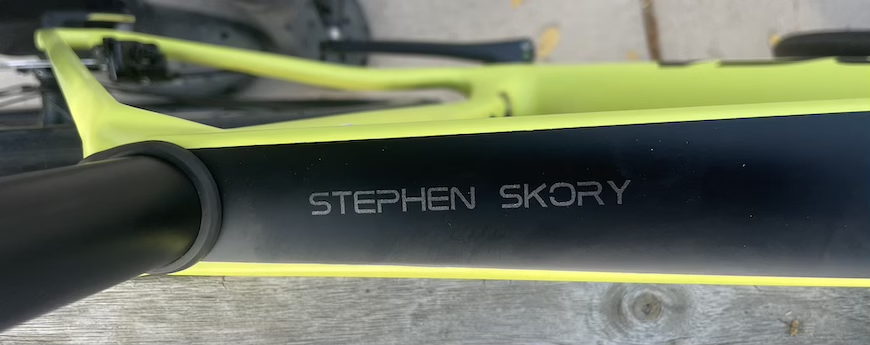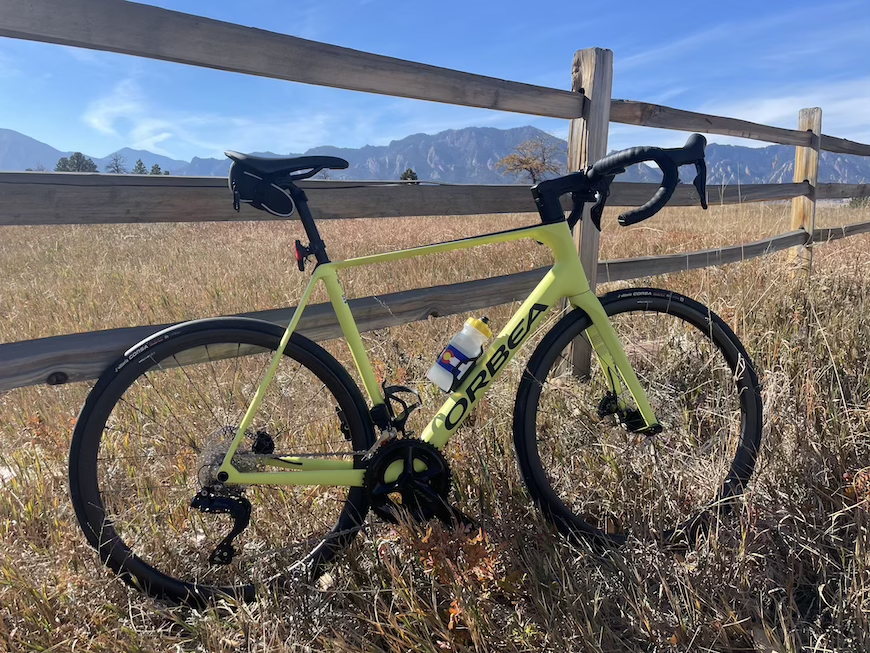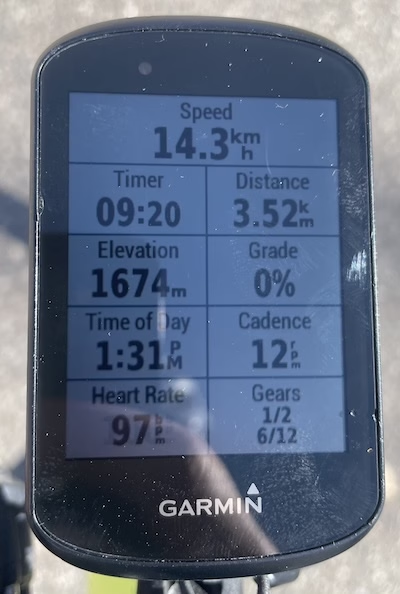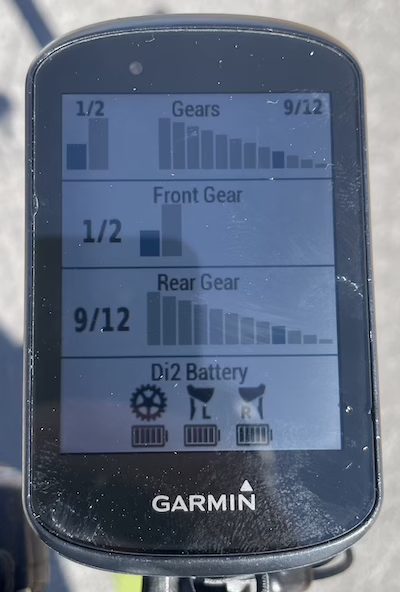In late 2013 I built a road bike (not pictured) from individual parts. I built it using a 2012 Fuji Altamira frame and fork, 11 speed Campagnolo Chorus, and Mavic Wheels. It was a fun project to source all the parts and put it together. I have enjoyed riding this bike in the 11 years since I built it.
The bike has not been without issues. A few years ago the rear derailleur broke. What broke is not important to mention here, except that in the end my father in law was able to weld a fix, and I remain appreciative of that. The bigger problem is that very shortly after I built up my bike, Campagnolo made a small change to their 11 speed products that broke backwards compatibility. A replacement to my 11 speed rear derailleur was basically impossible to find, hence the need to fix the derailleur with welding. Since then, I've known that if anything broke again, I'd either have to buy a whole new component group, or a whole new bike. In a sense, I've been on borrowed time.
In the intervening decade since I built the bike, there have been a few major changes to road bikes:
- Rim brakes have been replaced with disc brakes. I think that disc brakes are wonderful on mountain bikes, I have them on my MTB. For road bikes I think they are less crucial. The stopping power of rim brakes is more than enough for road bikes. However, disc brakes on road bikes is the direction the market has gone, probably for better (on balance) than worse.
- Electronic shifting replaced the cable actuated shifting with batteries, wires (or radio signals), and servos. Instead of levers, the shifters on the handlebars are simply buttons and moving the derailleurs is handled by a computer. I have been manually shifting for over 35 years without too many problems, but I am also not a luddite and the precision and speed of electronics are hard to beat.
- Internal cable routing runs cables inside as much of the bike structure as possible. There are aerodynamic advantages to this, and it also prevents dirt from accumulating on the cables. It also makes installing and servicing the cables much, much harder. Personally, I like the look of a bike with internal cabling.
- Tire clearance has inflated (ha!) dramatically. My Fuji can only handle 25C tires, while many modern road bikes can handle 32C or higher. Partially enabled by disc brakes (because rim brakes struggle to reach around large tires), larger tires allow for lower tire pressures that make riding more comfortable.
- Tubless tires remove the tubes inside tires. This is similar to tires on cars, except that bike tires typically have liquid sealant inside. On a mountain bike the advantages of tubeless are many, not least of which they eliminate the possibility of pinch flats. I have tubeless tires on my mountain bike and I think that they are well worth the hassle. On road bikes the advantages are less clear. The tire sealant only works at lower pressures, around 40 PSI. This means that a tubeless tire inflated to 90 PSI that gets a small leak will simply hiss out sealant (spraying it everywhere) until around 40 PSI, at which point the sealant can do its job. But then the tire is at 40 PSI, and you're squishing along on a really soft tire that's better than a fully flat tire, but not by much.
In summary, there have been a number of changes to road bikes in the last decade, most of which my Fuji either couldn't take advantage of, or wasn't worth doing. I decided it was time to get a new bike that had some or all of the new technologies.
After thinking about it for many (many) months, looking at lots of options (there is a spreadsheet), in early August 2024 I ordered a custom painted Orbea Orca road bike from a local shop. I have always liked Orbea bikes, and Orbea custom painted bikes cost the same as off-the-shelf models. Many other manufacturers charge extra for custom painting. The three month wait is fine if you already have a bike. I've always wanted a yellow and black bike, and that's what I got. I even have my name on the bike!

Of all the technologies mentioned above, the only one my bike doesn't have is tubeless tires. It is "tubeless capable," but I don't think I will do that. It has 12 speed Shimano Di2 electronic shifting with hydraulic disc brakes. The tires are 32C, quite a bit bigger than what I have on my Fuji.
The Shimano Di2 system is semi-wireless. Each shifter has a coin battery and communicates wirelessly with the derailleurs, and the derailleurs share a rechargeable battery that's stored in the seat tube. As shown below, the shifters can connect to my Garmin 530 and it can show what gear I'm in and the state of the batteries. Supposedly for average usage the derailleur battery lasts a few months, but having this view will be useful.
As I write this, I have only gone on one short ride to acquaint myself with the bike and adjust things. I think I will probably change the saddle and I may also change the seat post. I think the bike looks wonderful, it rides great, and I'm excited to ride it more. Of course, it's heading into winter here, and opportunities to ride will be less than in the summer. But that's okay, it will allow me to make sure it's set up the way I want in time for the spring and summer.


